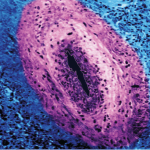
Rawpixel.com / shutterstock.com
If you’re a middle-aged woman who makes a New Year’s resolution to work out regularly and you keep that promise for only six months, don’t think that will go far in protecting your joints. Researchers in Australia have homed in on the details of the sustained physical activity required to reduce the risk of joint symptoms.
Their work, “Potential Effect Modifiers of the Association Between Physical Activity Patterns and Joint Symptoms in Middle-Aged Women,” appeared online Dec. 6, 2017, ahead of print in Arthritis Care & Research. Geeske Peeters, PhD, is the Atlantic Fellow for Equity in Brain Health at the Global Brain Health Institute, which is based at the University of California, San Francisco, and Trinity College in Dublin, Ireland. A co-author on the study, Dr. Peeters says, “We wanted to find out whether body mass index (BMI), menopausal status and hormone therapy (HT) would modify the association between physical activity (PA) joint symptoms in later middle-aged women.”
Using data on 6,661 participants from the Australian Longitudinal Study on Women’s Health, the researchers sought information on joint pain and stiffness, PA, height and weight, menopausal symptoms and HT use. The women, who were born between 1946 and 1951, completed health surveys every three years from 1998–2010.
Physical Activity Helps
Dr. Peeters says, “In our study, a low level of physical activity was defined as spending between 50 and 500 MET minutes/week. The unit ‘MET minutes/week’ indicates the time spent per week in an activity of a certain intensity. Activities with greater intensity have higher MET values. An example of how 50 MET minutes/week can be accrued is walking a total of 15 minutes per week. Examples of how 500 MET minutes/week can be accrued include jogging or swimming 75 minutes per week, or walking 150 minutes per week.”
“Our findings suggest women who maintain at least 50–500 MET minutes/week throughout midlife have a lower likelihood of developing joint symptoms than women who do less than 50 MET minutes/week,” Dr. Peeters says. “[Although] the exact minimum of physical activity required to reduce the risk of joint symptoms is not known, it is likely the minimum will fall within the 50–500 MET minutes/week range.”
Menopause & Hormone Therapy?
“While biologically plausible, the current study found no evidence that age at menopause and hormone therapy influence the association between physical activity and joint symptoms,” she says. “This may not be surprising given the contrasting findings in the literature around the associations of menopause and hormone therapy with joint symptoms.”

